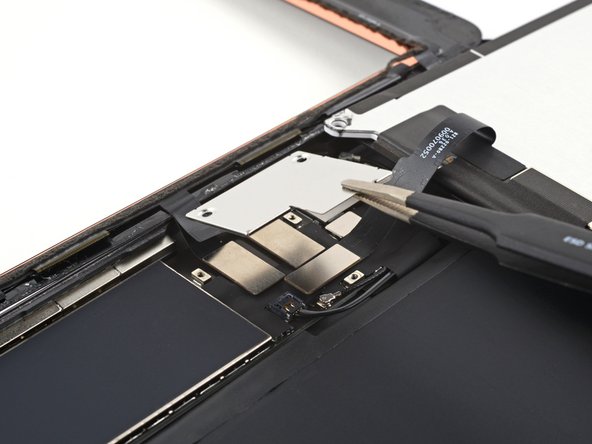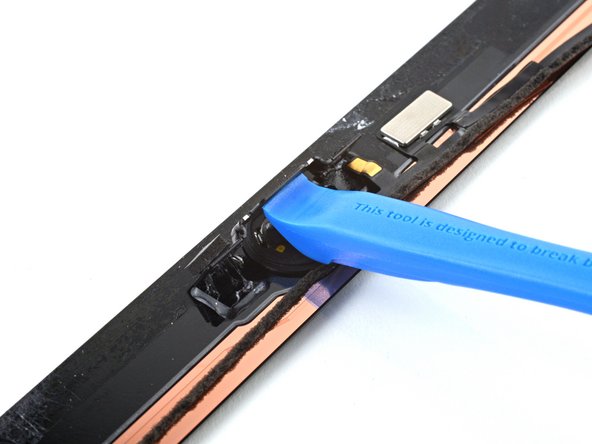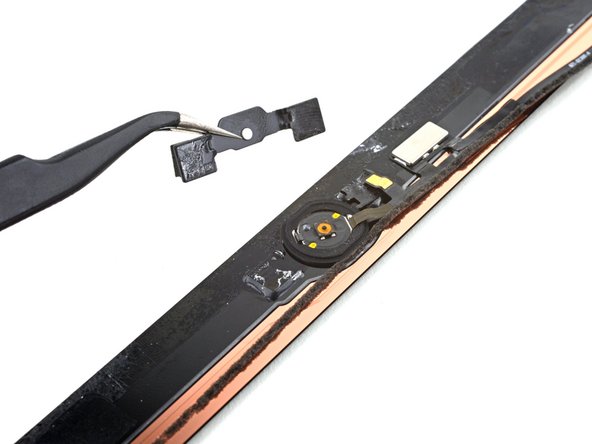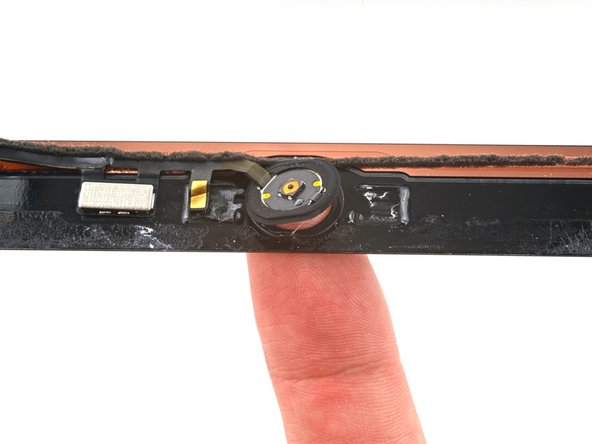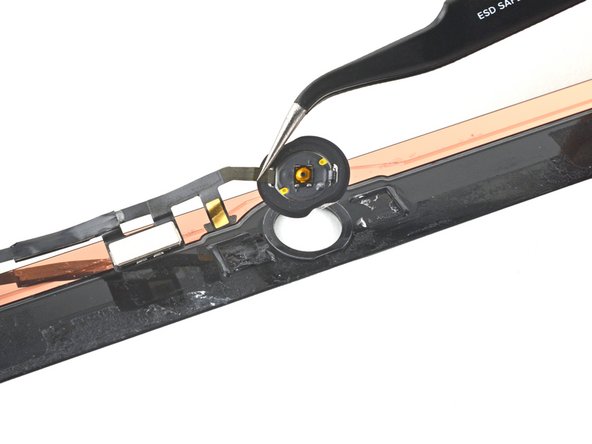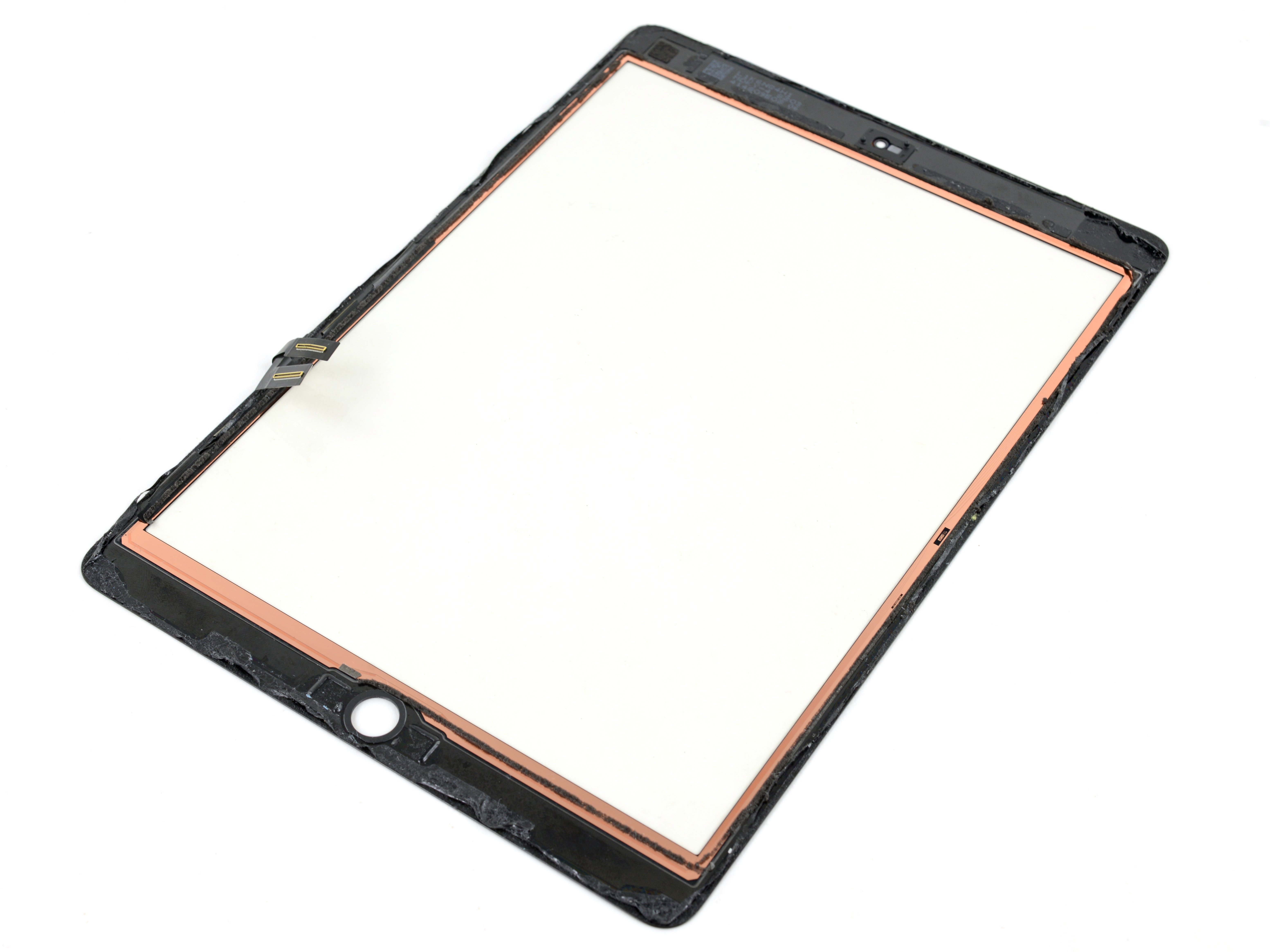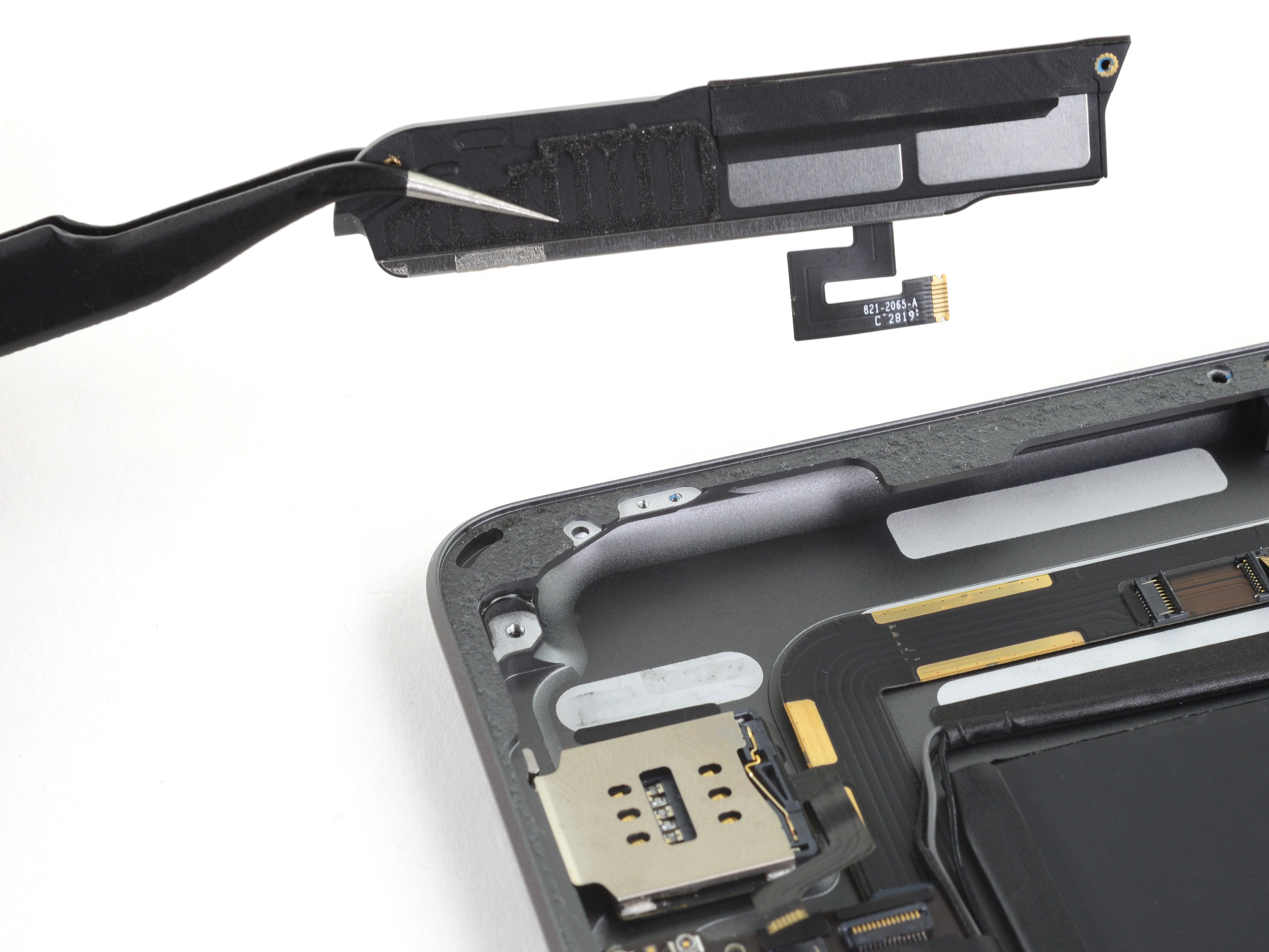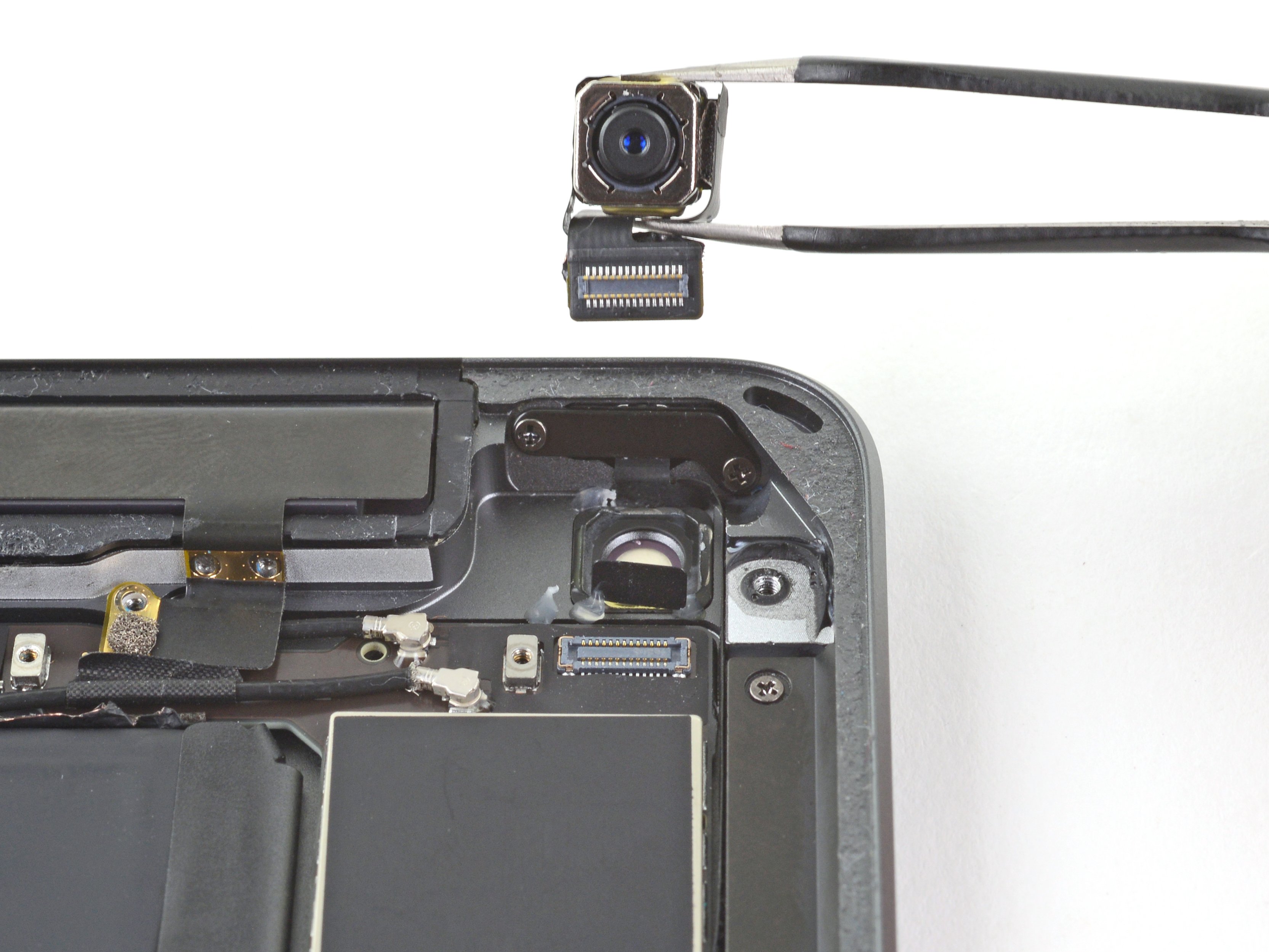iPad 8 LTE Home Button Assembly Replacement
Duration: 45 minutes
Steps: 54 Steps
Heads up! The home button’s Touch ID sensor is uniquely paired with the logic board. Swapping out the home button means you’ll lose Touch ID functionality.
Ready to swap out the home button assembly in your iPad 8 LTE? This guide’s designed just for the LTE version, so if you're working with the Wi-Fi model, be sure to check out the other guide. Just a heads up, replacing the home button means the Touch ID sensor won't work anymore since it’s paired with the logic board. When you’re isolating the battery, take extra care with the battery blocker. The battery contacts can be pretty delicate and break easily, which could cause some serious, irreversible damage. If you decide to skip isolating the battery, be super cautious with metal tools—only use them when absolutely necessary, like when you're removing screws. This helps avoid any accidental short circuits or damage to sensitive components. Some of the photos in this guide may feature a slightly different model, but don’t worry, they won’t mess with the steps. If things get tricky or you just want some pro help, feel free to schedule a repair.
Step 1
- Warm up an iOpener and stick it onto the left edge of your device for a solid two minutes to loosen things up.
Tools Used
Step 2
- While you're giving the adhesive some time to chill and loosen up, keep an eye out for these delicate spots that don’t appreciate being pried too hard:
- Front camera
- Antennas
- Display cables
Step 3
In the next few steps, we're going to show you how to use the Anti-Clamp—our handy little tool designed to make opening your device a breeze! If you don't have an Anti-Clamp on hand, no worries! Just skip ahead three steps for another method.
For a detailed walkthrough on using the Anti-Clamp, be sure to check out this guide.
If your iPad's surface is feeling a bit too slick for the Anti-Clamp to grab onto, just grab some tape and make it a bit stickier!
- Give that blue handle a gentle tug back to release the Anti-Clamp's arms and let the magic begin!
- Nestle your iPad on a surface so it sits comfortably between the suction cups—like it's getting a cozy hug.
- Set those suction cups near the center of the left edge—one on top and one on the bottom, nice and snug.
- Keep the bottom of the Anti-Clamp steady and give the top cup a firm press to create a perfect seal.
Step 4
- Grab that blue handle and pull it forward to lock the arms in place.
- Give the handle a full 360-degree clockwise twist, or keep turning until the suction cups start to stretch nicely.
- Keep an eye on the suction cups so they stay lined up. If they start to drift out of sync, just loosen them a bit and realign the arms before continuing.
Step 5
Turn no more than half a twist at a time, then chill for a minute. Let the Anti-Clamp and patience do their magic!
Want to master the hair dryer like a pro? Check out this guide for all the details.
If the Anti-Clamp isn’t making enough space, just warm it up a bit more and twist the handle clockwise half a turn to get things moving.
- Hold tight for a minute to give that adhesive a little time to let go and open up a gap.
- If your screen's not warming up enough, try using a hair dryer to gently heat the left edge of the iPad.
- Once the Anti-Clamp has created a big enough gap, slide an opening pick under the digitizer.
- Feel free to skip the next step, you've got this!
Step 6
Got a screen that looks like a shattered disco ball? Slap on some clear packing tape to give your suction cup a better grip. No suction cup? No problem! Use some tough tape to get the job done. And if all else fails, a tiny dab of superglue can stick that suction cup right where you need it. Easy does it!
- After the screen feels warm to the touch, stick a suction handle near the left edge, as close to the border as you can get.
- Gently lift the screen using the suction handle to create a tiny gap between the digitizer and the frame.
- Slide an opening pick into the gap between the digitizer and the frame to keep things moving.
Tools Used
Step 7
No worries if the opening pick is peeking through the digitizer — just pull it out. The LCD screen should be safe, but be mindful, as leftover adhesive can be a bit of a pain to clean up.
- Pop a second opening pick into the gap you just made.
- Gently slide that pick down to the bottom-left corner to loosen up the adhesive.
- Keep the pick wedged there so the adhesive doesn’t snap back together.
Step 8
- If your opening pick gets a bit clingy with the adhesive, just give it a little 'roll' along the side of the iPad to keep on breaking that adhesive loose.
Step 9
- Gently slide your first opening pick up towards the top-left corner to loosen that stubborn adhesive.
- Keep the pick wedged there so the adhesive doesn’t sneak back and stick together again.
Step 10
- Warm up that iOpener and stick it to the top edge of your device for a solid two minutes.
Tools Used
Step 11
- Gently twist the pick around the top-left corner to loosen up that stubborn adhesive and get things moving.
Step 12
Be careful not to slide the pick over the front camera! It could end up damaging the lens. Follow these steps to make sure you avoid that mishap.
- Gently slide the opening pick along the top edge of the device, making sure to stop just before you get to the front camera.
Step 13
- Gently pull the pick out until just the tip is sitting between the digitizer and the frame.
- Slide the pick above the front camera, carefully separating the adhesive as you go.
- Keep the pick close to the right side of the front camera for the next steps.
Step 14
- Slide the pick back in and gently glide it toward the device’s top-right corner to fully loosen that stubborn adhesive.
- Keep the pick planted in the top-right corner to stop the adhesive from sneaking back together.
Step 15
- Warm up your iOpener and let it rest on the right edge of your device for a couple of minutes. This will give it a nice, gentle heat-up to get the job done.
Tools Used
Step 16
- Gently slide the pick around the top-right corner of your device to loosen up that stubborn adhesive.
Step 17
The display cables hang out about halfway up from the bottom edge of your iPad. When you’re sliding your tool, ease off once you get to around three inches from the bottom to keep things safe and sound.
- Pop in a fresh opening pick and gently slide it halfway along the right edge of your iPad.
Step 18
- Warm up an iOpener and press it against the bottom edge of your device for a solid two minutes to loosen things up.
Tools Used
Step 19
Keep the pick from making a full spin around the corner to avoid messing up the antenna.
- Gently slide that bottom-left pick into the corner to break free from the adhesive's grip.
- Keep the pick snug in the corner while you gear up for the next step.
Step 20
Keep the pick sliding only toward the home button—going the other way might mess up the antenna, and we don’t want that!
If you need to glide the pick over this part again, just pull it out and pop it back in at the bottom-left corner to keep things smooth.
- Pop a fresh opening pick into that gap you just made at the bottom edge of your iPad.
- Gently glide the pick over the antenna, but hold up right before you reach the home button.
- Keep the pick resting to the left of the home button before you move on.
Step 21
Gently slide the pick in no more than 1 mm to keep the right antenna safe and sound.
- Pop an opening pick into that sneaky little gap you've just created.
- Now, slide the pick under the home button and glide it towards the bottom-right corner, ensuring that only the tip is nestled between the digitizer and the frame.
Step 22
Slide the pick gently toward the home button—going the other way might mess up the antenna, and we don’t want that!
If you find yourself needing to slide that pick over this section again, just pull it out and reinsert it at the bottom-right corner. You've got this!
- Slide the pick back in and glide it toward the home button to fully break free of that stubborn bottom adhesive.
- Before moving on, keep the pick snugly positioned to the right of the home button.
Step 23
- Warm up an iOpener and stick it to the right edge of your device for a cozy two minutes.
Tools Used
Step 24
Take it easy with this step! Give yourself some time, make sure the adhesive is nice and toasty, and ensure you've got all the adhesive separated with a pick. It's totally fine to pause and reheat if you need to—you're doing great!
If you're running into some serious resistance, just heat up those edges again and gently work your way around with an opening pick. Take it slow and steady—you're almost there!
- Gently twist the opening picks into the left corners of the iPad to nudge the digitizer up a bit, while you cleverly tackle the last of that pesky adhesive.
Step 25
- Gently lift the left edge of the digitizer upward to loosen the adhesive along the right side of your iPad.
Step 26
- Keep a steady hand on the digitizer while you gently slide an opening pick between the two display cables to carefully loosen the last bit of adhesive.
Step 27
- After you've cleverly peeled away all that sticky stuff, think of the digitizer as a book and gently swing it open, laying it down flat next to the iPad.
- When you're putting everything back together, give the leftover adhesive on the frame—and on the digitizer if you're reusing it—a little scrub with isopropyl alcohol. Don't forget to use our adhesive strips or pre-cut adhesive cards to keep things nice and secure.
- Keep an eye on those display cables as you wrap up the reassembly. Make sure they’re tucked away neatly underneath the LCD screen to avoid any mishaps!
Step 28
- Grab some tweezers or use your fingers to gently peel away any tape hiding the LCD screws. It’s a small step, but it’ll make the next one much easier!
Tools Used
Step 29
- Grab your Phillips screwdriver and unscrew the four 4.3 mm screws holding the LCD screen in place. A little twist here, and you're on your way!
Step 30
The LCD is gently sticking to the frame, like a cozy hug that’s not too tight. Just a little bit of care will help you free it.
- Gently slide a spudger into the gap between the frame and the top-right corner of the LCD.
- Take your time and pry carefully with the spudger to peel away the adhesive.
Tools Used
Step 31
- Now, do the same thing for the top-left corner of the LCD. You got this!
Step 32
Hold off on pulling the LCD all the way out just yet—it’s still hanging on by its flex cable!
- Take the flat side of your spudger and gently ease the LCD out of its snug little home, just enough to get a good grip with your fingers.
- Now, carefully flip the LCD like you're turning a page of a book—start from the side near the camera and smoothly rotate it over towards the home button end of the frame.
- Place the LCD on a clean, soft surface that’s free of lint, so you can get to the display cables without a hitch.
Tools Used
Step 33
- Grab your trusty Phillips screwdriver and carefully remove the 2.3mm screw that’s holding the battery connector in place on the logic board.
Step 34
Here’s a peek at the battery connector tucked underneath the logic board. Keep these shots handy as your go-to guide while you carefully unplug the battery.
Heads up: the battery connector has these clever cantilever springs on the logic board that press against the battery’s contact pads. Since both the logic board and battery are glued down, you’ll want to slide something thin and flexible between the contacts to safely disconnect the battery.
Step 35
Take it easy when you're isolating the battery with a battery blocker. The contacts are super delicate and can get bent or broken pretty easily. That could cause some serious damage, so just be careful!
Make sure the battery blocker's logo is facing upwards — no upside-down surprises here!
Avoid shoving the battery blocker under the connector with too much force. If it’s being stubborn, try a playing card to gently disconnect the battery instead.
The battery blocker or playing card should slide smoothly under the logic board without any roadblocks, settling at about a 15-degree angle once in place.
- Gently slide that battery blocker right under the logic board's battery connector at a slick 35-degree angle.
- Keep that battery blocker right where it is while you tackle the next steps!
Tools Used
Step 36
- Grab your trusty Phillips screwdriver and let’s get to work! Carefully unscrew those three 1.4 mm-long screws holding down the display cable bracket. You've got this!
Step 37
- Grab some tweezers or your trusty fingers and carefully lift off the display cable bracket. It's a simple step, but be gentle, and you'll be good to go!
Tools Used
Step 38
- Grab that trusty spudger and gently slide the flat end underneath to lift and disconnect the LCD cable press connector. You're doing great!
- When it's time to reconnect those press connectors, take a moment to line things up just right. Press down on one side until you hear that satisfying click, then do the same for the other side. Easy peasy!
- Just a quick tip: avoid pressing down in the center. If things get a bit wonky and the connector isn't aligned, the pins might bend, and we definitely don't want that. Keep it smooth and steady!
Tools Used
Step 39
- Take out the LCD with care and place it face down on a nice, clean, soft, lint-free spot. You've got this!
Step 40
- Grab your trusty tweezers and gently peel away the tape that's keeping the home button cable ZIF connector covered. You've got this!
Tools Used
Step 41
- Grab a spudger, opening tool, or even your fingernail to gently flip up the tiny hinged locking flap on the home button cable’s ZIF connector.
Tools Used
Step 42
- Grab a trusty pair of tweezers and gently pull the home button ribbon cable straight out from that ZIF connector. You've got this!
Tools Used
Step 43
Be gentle and only pry on the connectors themselves—leave the logic board socket alone to keep your iPad safe and sound.
- Gently slide the flat end of your spudger under the two digitizer cable press connectors and lift them up to unplug—easy does it!
Tools Used
Step 44
Watch out—don’t let that home button ribbon cable get poked or torn!
- Gently slide the flat end of your spudger under the vibration isolator right below the SIM card reader to lift it up.
- Carefully take out the vibration isolator.
Tools Used
Step 45
The cable is held down with a bit of gentle adhesive.
- Grab your tweezers and gently lift the home button cable away from the rear case like you're carefully peeling off a sticker.
Tools Used
Step 46
Grab an opening pick and carefully slice through any leftover adhesive still holding the front panel assembly to the frame—think of it as gently breaking up a sticky situation.
Without proper insulation, parts of the digitizer might accidentally short out by touching other components, which can mess with your touch input—definitely not what we want!
This insulation is sneaky—it's invisible to the naked eye and isn’t the same as the foam dust barrier strips you often see on iPads.
- Take off the front panel assembly carefully.
- If your new display starts acting up with random or phantom touches, a thin strip of insulating tape like Kapton (polyimide) tape applied to the highlighted spots on the back of the panel usually does the trick. Replacement digitizers come with the right insulation already, so you probably won’t need to add tape.
- When putting everything back together, make sure to scrape off any leftover adhesive from the iPad and clean the sticky areas with high-concentration (90% or higher) isopropyl alcohol and a lint-free cloth. This preps the surface for fresh adhesive and helps everything stick nice and tight.
- Give your iPad a quick test run, then stick on the pre-cut adhesive strips to the back of the display following the display adhesive application guide before sealing it up.
Step 47
The home button cable is held in place by a bit of light adhesive magic.
- Gently use your fingers to lift the home button cable off the back of the front panel. A little patience here goes a long way!
Step 48
If the adhesive is being a bit too clingy, no need to stress! Just give the home button cable a gentle warm-up with an iOpener or a hair dryer to help loosen that stubborn glue.
- Slide your trusty opening pick under the home button cable to gently separate it from the front panel. No rush, just a smooth move.
- Keep gliding that pick along until you hit the home button bracket. You're almost there!
Tools Used
Step 49
- Carefully slide an opening pick under the top of the home button cable to gently free the metal contact from the home button bracket. Take your time, and be sure not to rush this step!
Step 50
- Warm up an iOpener and place it on the home button bracket for about thirty seconds to loosen things up.
Tools Used
Step 51
- Gently slide an opening tool under the home button bracket and lift it away from the front panel with care.
If you accidentally bend or warp the home button bracket, it might make your home button feel a little less... 'clicky' when you put everything back together. So, handle with care to keep that satisfying button press!
If the home button bracket starts to bend before it pops off, just add a couple of drops of high-concentration (90% or higher) isopropyl alcohol to loosen things up a bit.
Step 52
- Take off the home button bracket carefully.
- When putting it back, grab some strong glue like E6000 to stick it firmly to the front panel assembly.
Step 53
Take it easy with the pressure! That adhesive is holding onto a super delicate gasket, and we definitely don't want it to rip.
- Gently press the home button from the front panel using your finger to loosen the adhesive holding it down.
Step 54
- Put your device back together by doing these steps in reverse order.
- When you're done, make sure to recycle your e-waste at an R2 or e-Stewards certified facility.
- If the repair didn’t quite work out, try some basic troubleshooting or reach out to our iPad 8 Answers community for support.
-
































































































